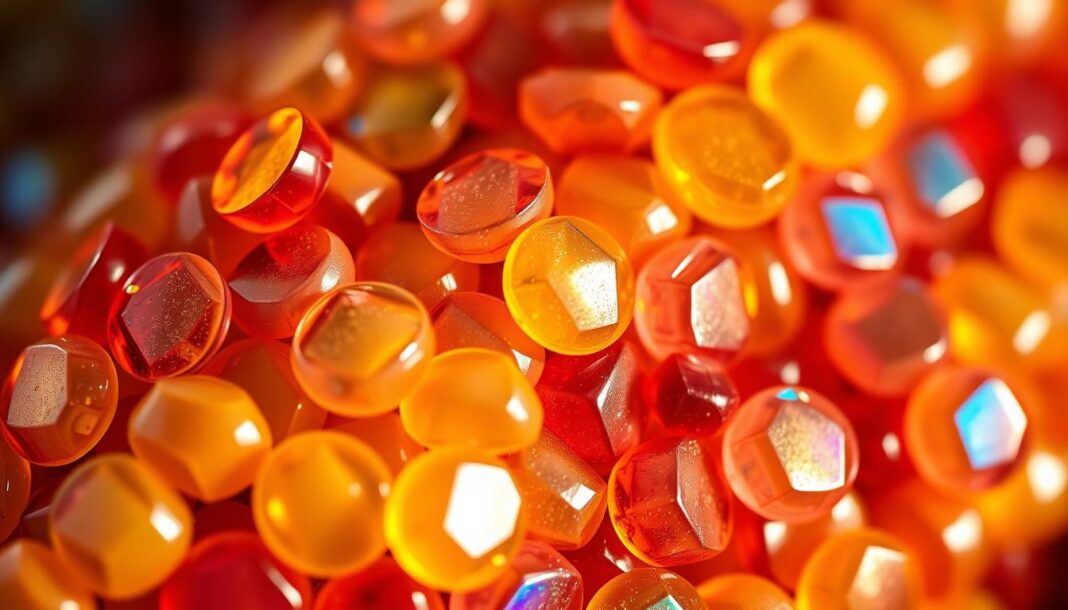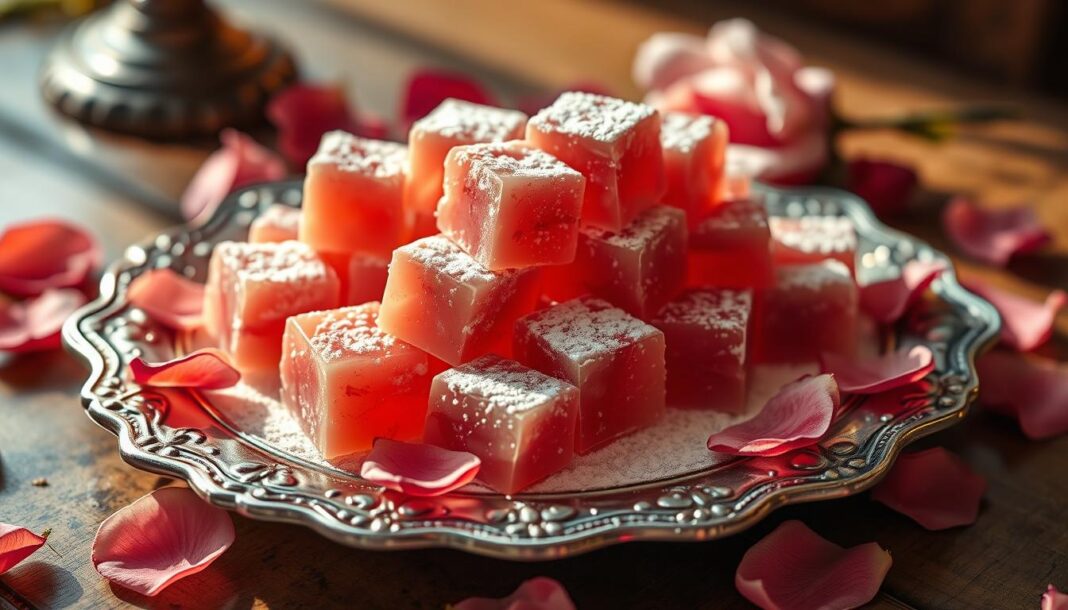We’re excited to introduce you to sekanjabin, a traditional Persian syrup that has been delighting palates for centuries. This ancient delicacy is primarily made from honey or sugar, water, and vinegar, with the addition of fresh mint for an aromatic touch.
The unique blend of flavors in this syrup makes it a versatile condiment that pairs well with various dishes and beverages. By exploring its rich history, essential ingredients, and traditional preparation methods, we can appreciate the simplicity and complexity of this ancient recipe.
Key Takeaways
- Discover the traditional Persian syrup that’s been a culinary delight for centuries.
- Learn about the basic ingredients and their significance in making sekanjabin.
- Understand the traditional preparation methods and how to incorporate this syrup into your meals.
- Explore modern twists on the classic recipe to refresh your culinary experience.
- Find out how to store this syrup for long-lasting enjoyment.
The Ancient Origins of Sekanjabin
The origins of sekanjabin date back to medieval Persia, where it was first mentioned in the tenth century in Al-Fihrist, an important catalog of Arabic books.
Sekanjabin may have originated as a simple preparation of vinegar (serke) and honey (angobin), ingredients that have remained constant throughout its history. In medieval Persia, these syrups were used for therapeutic effects and often contained medicinal herbs.
From Medieval Persia to Modern Tables
The name “sekanjabin” itself reveals its composition, highlighting the two primary ingredients that have remained unchanged. In its early days, sekanjabin was valued not just for its refreshing taste but also for its medicinal properties, similar to oxymel preparations used in ancient medicine.
| Ingredient | Traditional Use | Modern Use |
|---|---|---|
| Vinegar (Serke) | Medicinal purposes | Refreshing beverage |
| Honey (Angobin) | Therapeutic effects | Sweetener |
| Mint | Digestive aid | Flavor enhancer |
Traditional Uses and Cultural Significance
Persian physicians would often prescribe sekanjabin syrup as a remedy for various ailments, particularly during hot summer days when its cooling properties were especially valued. The transition of sekanjabin from a medicinal preparation to a beloved beverage and condiment demonstrates how deeply it’s woven into the cultural fabric of Iran and surrounding regions.

Throughout centuries, this syrup has maintained its place at Persian tables, evolving slightly in preparation but remaining true to its essential character. We find it fascinating how sekanjabin has preserved its cultural significance while adapting to modern tastes and serving methods, making it a refreshing drink on a hot day.
Understanding the Key Ingredients of Sekanjabin
Understanding the key ingredients of Sekanjabin is crucial to appreciating its unique flavor profile. The harmony among its components is what makes this ancient syrup so enduring.
The Sweet and Sour Balance: Honey and Vinegar
The foundation of any good Sekanjabin lies in the balance between honey (or sugar) and vinegar. Traditionally, white wine vinegar is preferred for its clean acidity, though apple cider vinegar can be used for a different flavor dimension. Research has shown that vinegar can have various health benefits, adding value to Sekanjabin beyond its taste.
The Refreshing Power of Mint
Mint is the signature aromatic element in Sekanjabin, providing a cooling sensation. We recommend using fresh mint, specifically spearmint, for its sweeter flavor compared to peppermint. The addition of mint not only enhances the flavor but also contributes to the syrup’s refreshing quality, making it a perfect drink for warm weather when mixed with water.
How to Make Traditional Sekanjabin Syrup
The preparation of Sekanjabin syrup involves a simple yet precise method that we’ve perfected through testing multiple traditional recipes. This ancient syrup is made by combining a few key ingredients in a specific process.
Ingredients You’ll Need
For a classic batch of Sekanjabin syrup, you’ll need 4 cups of water, 4 cups of honey (or sugar), 1 cup of white vinegar, and a large bunch of fresh mint leaves. These simple ingredients transform into something extraordinary through the cooking process.
Step-by-Step Preparation Process
Begin by combining water and honey in a pot over medium heat, stirring constantly until the honey completely dissolves, which typically takes about 10 minutes. Once the honey solution is clear, add the vinegar and reduce the heat to low, simmering for approximately 20-30 minutes to allow the flavors to meld.
| Ingredient | Quantity | Purpose |
|---|---|---|
| Water | 4 cups | Base for the syrup |
| Honey | 4 cups | Sweetness and flavor |
| White Vinegar | 1 cup | Sourness and preservation |
| Fresh Mint Leaves | A large bunch | Flavor and aroma |
After removing the pot from heat, submerge the fresh mint leaves in the hot syrup and let it cool to room temperature. This step allows the syrup to absorb the mint’s aromatic compounds. Finally, strain out the mint leaves and transfer your Sekanjabin syrup to clean glass containers for storage in the refrigerator.
Serving Sekanjabin: Two Delicious Ways
The beauty of sekanjabin lies in its multiple uses, from enhancing simple lettuce to creating a refreshing beverage. This versatility makes it a valuable addition to any summer gathering.
As a Dipping Sauce with Romaine Lettuce
One traditional way to enjoy sekanjabin is as a dipping sauce for fresh, crisp romaine lettuce leaves. To serve, arrange the lettuce leaves on a platter with a small bowl of sekanjabin syrup in the center. The contrast between the cool, crunchy lettuce and the sweet, tangy syrup is particularly refreshing during hot weather.
As a Refreshing Summer Drink with Cucumber
Sekanjabin can also be enjoyed as a refreshing summer drink. To prepare, mix 1½ cups of sekanjabin syrup with around 6 cups of cold water, then add grated cucumber to taste. Serve well-chilled over ice in a tall glass, garnished with a sprig of fresh mint and a thin slice of cucumber for an elegant presentation.
| Serving Method | Ingredients | Preparation |
|---|---|---|
| Dipping Sauce | Romaine lettuce, sekanjabin syrup | Arrange lettuce on a platter with syrup in the center |
| Summer Drink | Sekanjabin syrup, water, grated cucumber, mint | Mix syrup with water, add grated cucumber, serve over ice with mint garnish |
Tips for Perfect Sekanjabin Every Time
With years of testing behind us, we’re excited to share our top tips for perfecting sekanjabin. Achieving the perfect balance of sweet and sour flavors, along with the ideal consistency, is key to making this ancient Persian syrup truly exceptional.
Achieving the Ideal Consistency
The consistency of sekanjabin syrup is crucial. It should be similar to maple syrup—thick enough to coat the back of a spoon but still pourable. To achieve this, ensure that the sugar or honey is completely dissolved in water before adding vinegar. Maintaining the proper heat level during preparation is also crucial; too high, and the sugar may caramelize or burn, while too low heat means the syrup won’t reduce properly in the allotted 20-30 minutes of cooking time.
| Consistency Level | Description | Adjustment |
|---|---|---|
| Too Thick | Syrup is difficult to pour | Warm gently and add a small amount of water |
| Too Thin | Syrup is too runny | Reduce water or cook for a few more minutes |
| Ideal | Coats the back of a spoon | None needed |
Storage and Shelf Life
Proper storage is essential for maintaining the quality of sekanjabin syrup. Transfer the cooled syrup to sterilized glass containers with tight-fitting lids and store them in the refrigerator. The syrup will keep for up to 3-4 months. The high sugar content acts as a natural preservative, but always check for signs of fermentation or mold before serving from an older batch.
For the freshest flavor, mix only the amount you plan to consume immediately when preparing sekanjabin as a drink, storing the syrup and water separately. If you notice your syrup crystallizing during storage, simply place the container in warm water for a few minutes to restore its smooth consistency.
Modern Twists on the Classic Sekanjabin Recipe
The evolution of Sekanjabin is a testament to the creativity of cooks who continue to innovate while honoring tradition. We’ve seen a surge in modern variations that not only pay homage to its Persian roots but also infuse it with contemporary flavors.
One popular adaptation involves substituting apple cider vinegar for white vinegar, adding a fruity tanginess to the syrup. This twist complements the fresh mint leaves beautifully, creating a refreshing summer drink when diluted with cold water and garnished with grated cucumber and a few ice cubes.
Other innovative variations include using alternative sweeteners like maple syrup or agave nectar, and experimenting with herbs like basil or lemon verbena. Citrus-infused versions, featuring lemon zest or a splash of lime juice, have also gained popularity, making Sekanjabin a versatile ingredient for various recipes.


